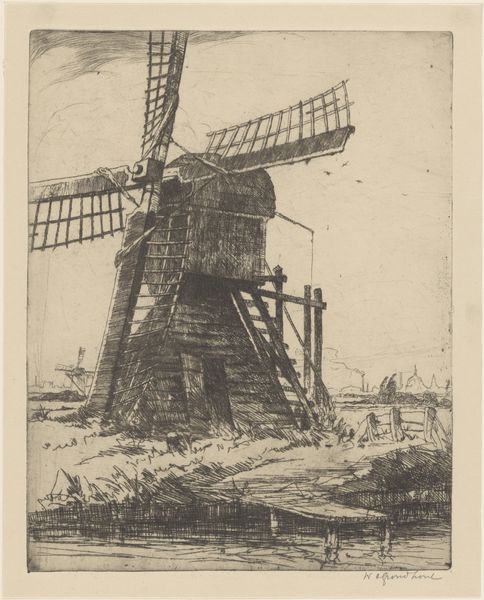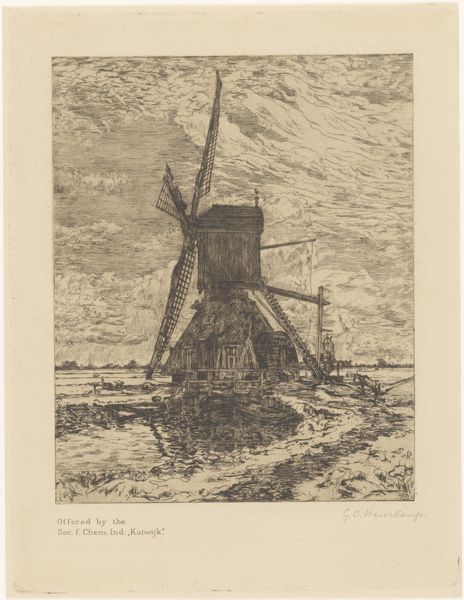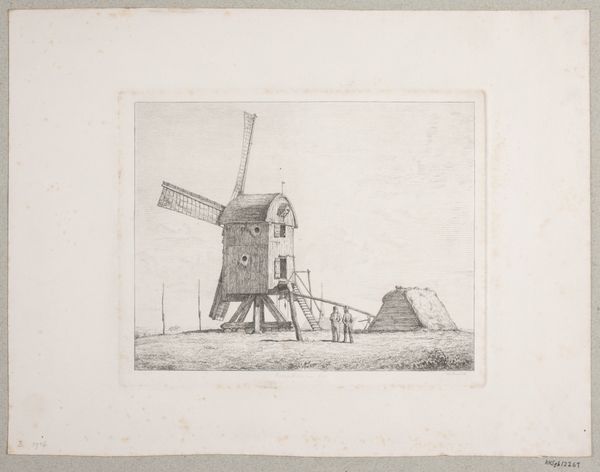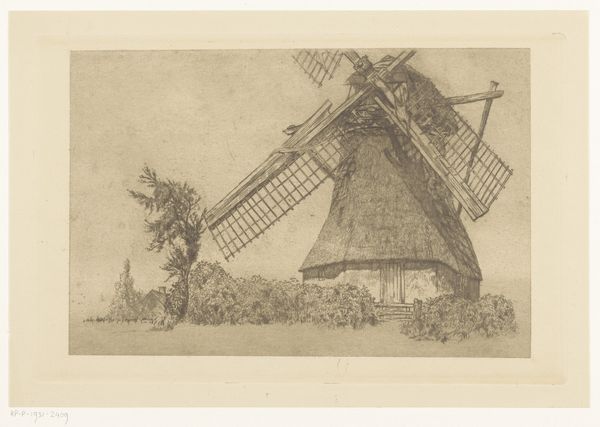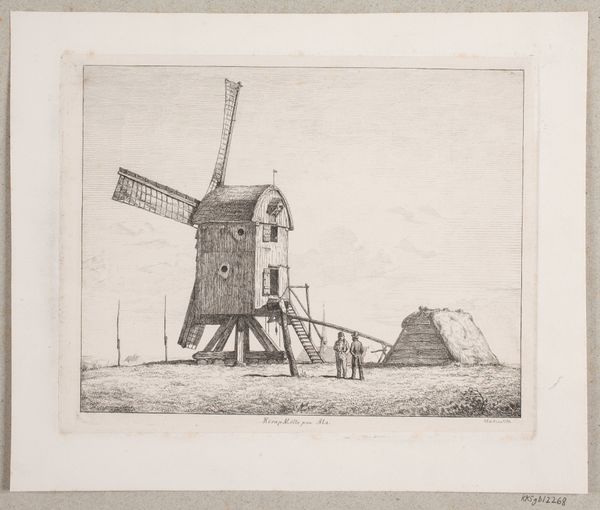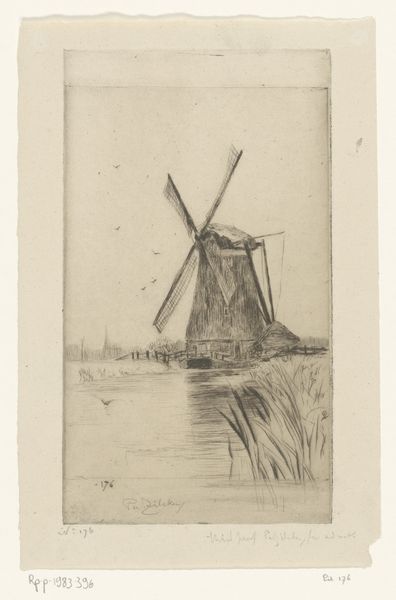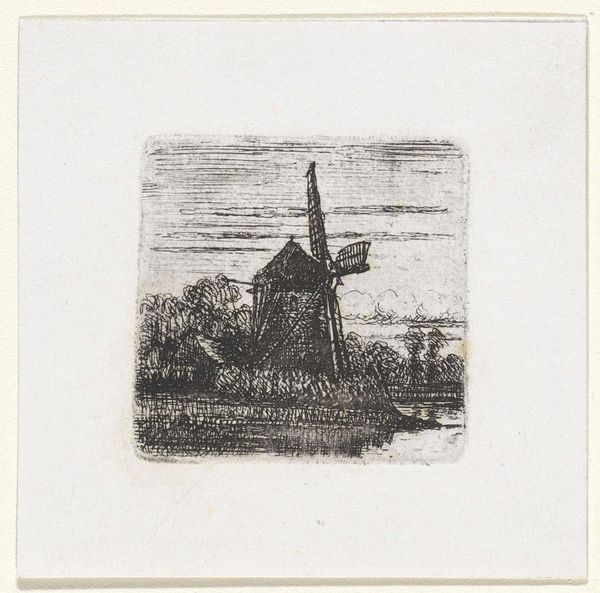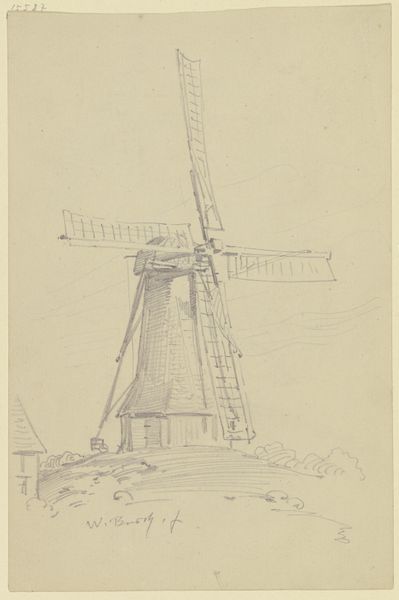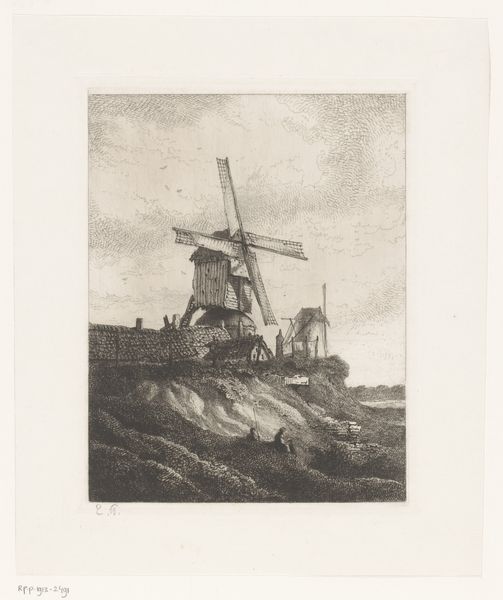
drawing, print, etching
#
drawing
# print
#
etching
#
landscape
#
cityscape
#
realism
Dimensions: height 103 mm, width 73 mm
Copyright: Rijks Museum: Open Domain
Editor: We are looking at "Gezicht op de Moulin de la Galette in Montmartre", an etching by Antoine Vollon from 1864. The image depicts a windmill nestled amongst buildings and lush greenery. I am struck by how idyllic the city seems, very different from modern-day impressions. What can you tell us about it? Curator: It’s interesting that you use the word “idyllic.” Vollon created this print at a crucial moment for Paris. Haussmann's renovations were radically reshaping the city, displacing communities and transforming public spaces. This area, Montmartre, was on the periphery of that transformation at the time. What do you think this image tells us about the changing roles of these old windmills? Editor: Perhaps the windmills, once vital for the city's industry, were becoming relics of a bygone era? Were they preserved for aesthetic or symbolic reasons? Curator: Exactly! Think about the context. The "Moulin de la Galette" was not just a windmill, but also a popular guinguette, a kind of open-air café and dance hall. Vollon's etching romanticizes a site of working-class leisure, even as that very class was facing displacement due to urban renewal. The print caters to the bourgeois appetite for picturesque views, all while conveniently ignoring the socio-economic realities of the working class in the face of modernization. Doesn't that change how you perceive that feeling of idyllic tranquility now? Editor: It absolutely does! It is a potent reminder that even seemingly innocent landscapes can be deeply implicated in power dynamics. Thanks! Curator: Indeed. It shows that understanding art also entails a careful consideration of its role in a much broader social narrative. A useful lesson!
Comments
No comments
Be the first to comment and join the conversation on the ultimate creative platform.
